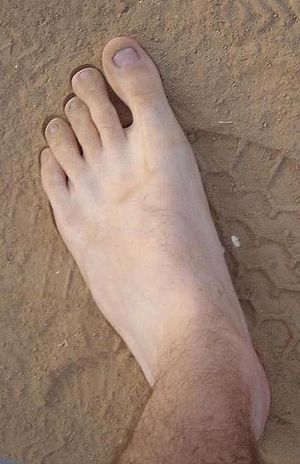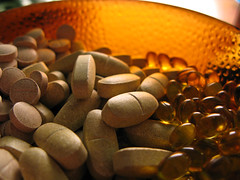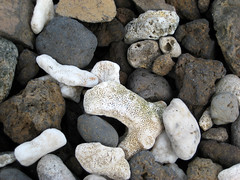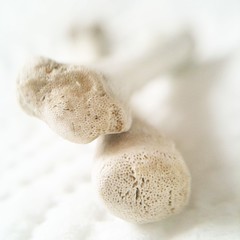 Image via Wikipedia
Image via WikipediaMost of us have heard of the term GOUT. But not many individuals are familiar with what Gout truly is, unless they've experienced gout's agonizing pain personally, or watched a loved-one temporarily suffer the symptoms.
Gout is a disorder of metabolism. It all starts with something called Purines. Purines are found in the foods that we eat. Purine-rich foods include such indulgences like alcohol, particularly beer, meats, seafood, and certain vegetables and legumes. These purines are naturally broken down via metabolism in the human body, into a product called Uric Acid. The Uric Acid is excreted through our kidneys. The breakdown of purines into uric acid is a natural process in human metabolism. But, when our body has difficulty excreting the uric acid, it is then when gout flare-ups begin. This excess of uric acid builds up into certain joints of the body, and in the foot, the most common location is in the big toe joint.
Why does the body have difficulty excreting the uric acid? Most frequently, after ingestion of these protein-rich foods, the body cannot keep up with excreting the extra uric acid, and these uric acid levels build up. Sometimes, there is a defect in one's metabolism where the individual is missing a certain enzyme that breaks the purines down into uric acid, resulting in excessive uric acid build-up with nowhere to go!
This abundance of uric acid likes to live in certain locations in the human skeleton, like knees, elbows, ears, and in the big toes! Once settled into their favorite location, the area becomes extremely red, swollen, and painful! It is so painful that a common description of pain is "so uncomfortable that a bed sheet touching my toe is excruciating!"
Again, the initial presentation of gout in the big toe presents as a red, hot, and swollen toe/joint that is significantly painful. X-rays are usually taken in the office, but it takes approximately 10 years for x-rays to show x-ray signs. So remember that x-ray's probably won't show anything at all, but soft tissue swelling.
Gout is a diagnosis based on your doctor's clinical suspicion. In other words, we suspect gout when the patient presents with the red, hot, swollen joint, has a history of gout, has eaten purine-rich foods recently, and sometimes when they've bumped or stubbed the toe. (That's right; sometimes trauma can precipitate a gout attack!).
What treatment should you expect if you present to your foot doctor with gout? X-rays are possibly a cortisone injection into the joint to break up inflammation and pain; an oral medication, specifically prescribed for acute gout, and labwork to review your uric acid levels. That's it! Usually, the symptoms are improved in a day or two, and resolved in 5-7 days. Sometimes patients are prescribed gout medications for daily intake for life to protect you from future gout flare-ups.
What can you do to protect yourself from another painful gout flare-up? First and foremost...diet control! Limit those purine-rich foods mentioned above! Gout is nicknamed "The Rich Man's Disease." Why?? Because those purine-rich foods like meat and seafood are expensive! Secondly, take your gout medication daily to prevent a new flare-up.
Although gout has a predilection for certain populations, it can affect anyone. Patients with symptomatic gout are now found surprisingly in young ages recently.
In addition to regular medications,
gout supplements in easy pill form have helped relieve symptoms in countless gout sufferers.
 Image via WikipediaArthritis is commonly seen among the elderly and can affect any joints in the body. The usual symptom of arthritis is joint pain. There are two types of pain associated with arthritis: acute and chronic pain. Acute pain is temporary. Chronic pain is persisting pain, it doesn't go away. The severity of pain may lessen but it's still there. Chronic pain is always associated is osteoarthritis and rheumatoid arthritis.
Image via WikipediaArthritis is commonly seen among the elderly and can affect any joints in the body. The usual symptom of arthritis is joint pain. There are two types of pain associated with arthritis: acute and chronic pain. Acute pain is temporary. Chronic pain is persisting pain, it doesn't go away. The severity of pain may lessen but it's still there. Chronic pain is always associated is osteoarthritis and rheumatoid arthritis.

















